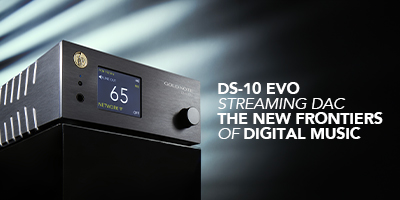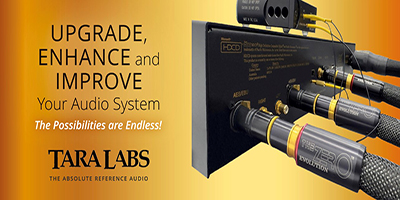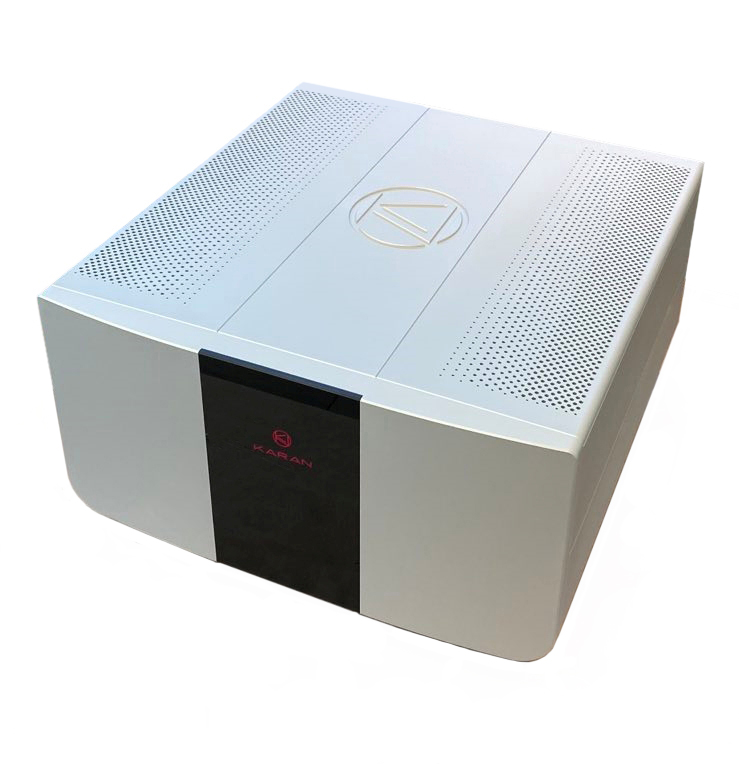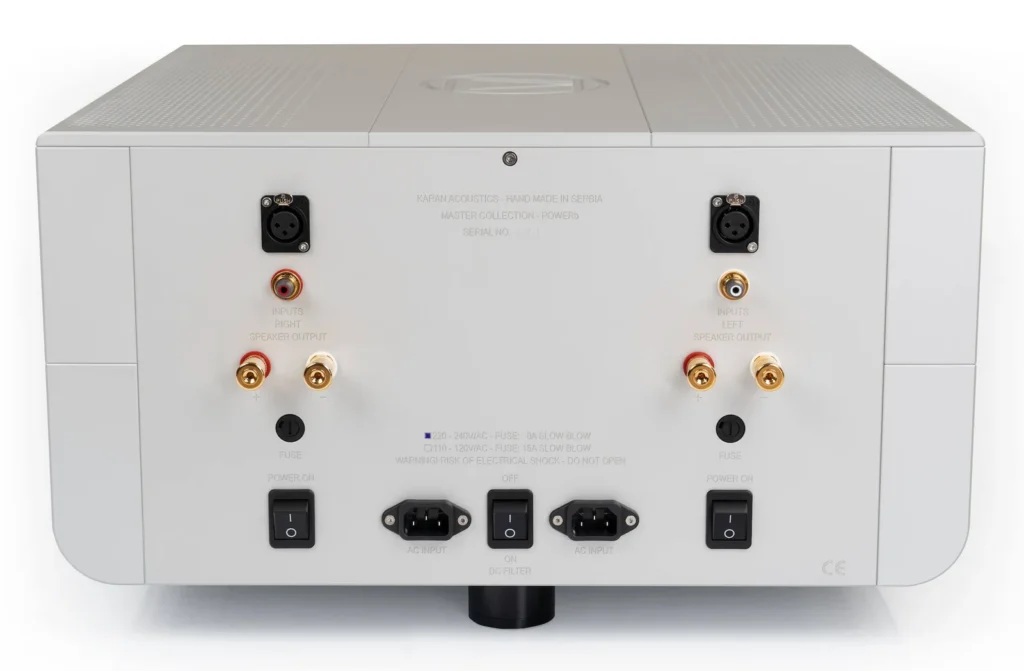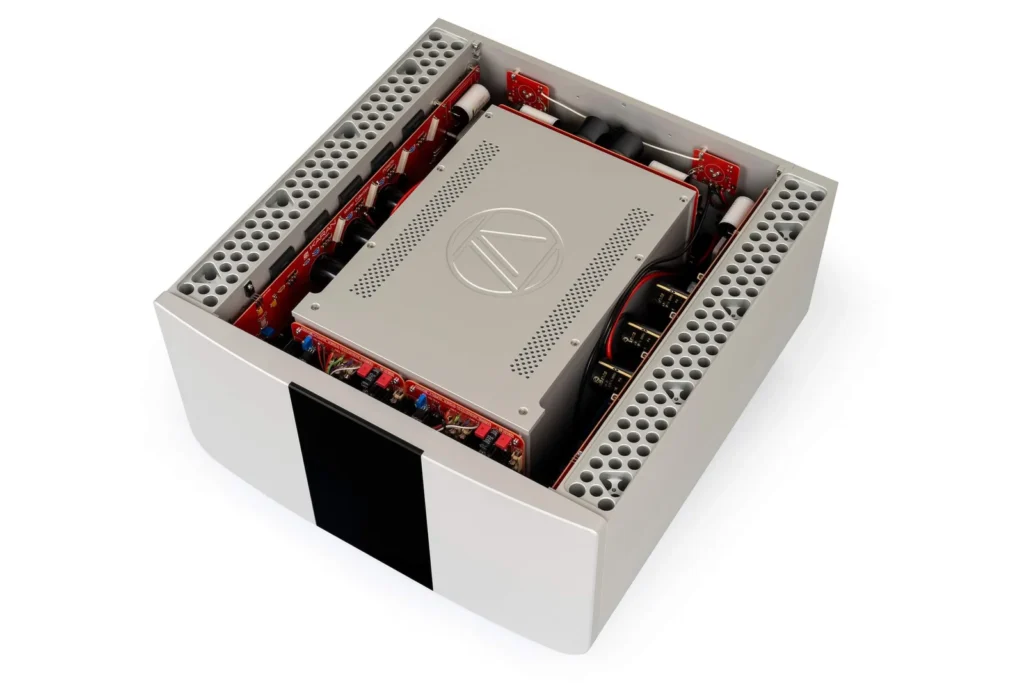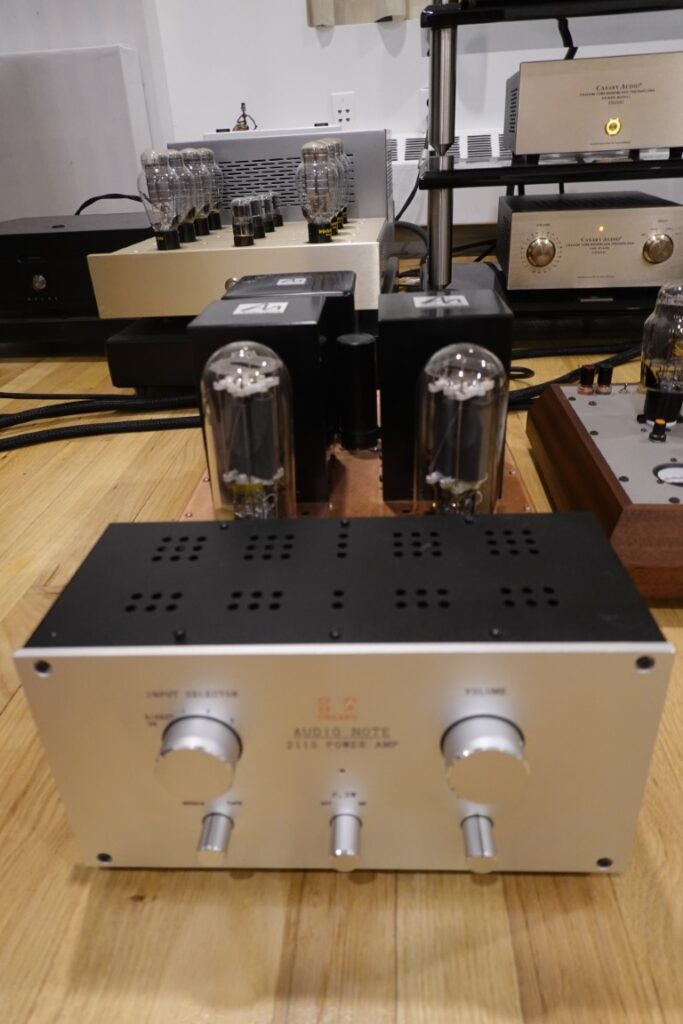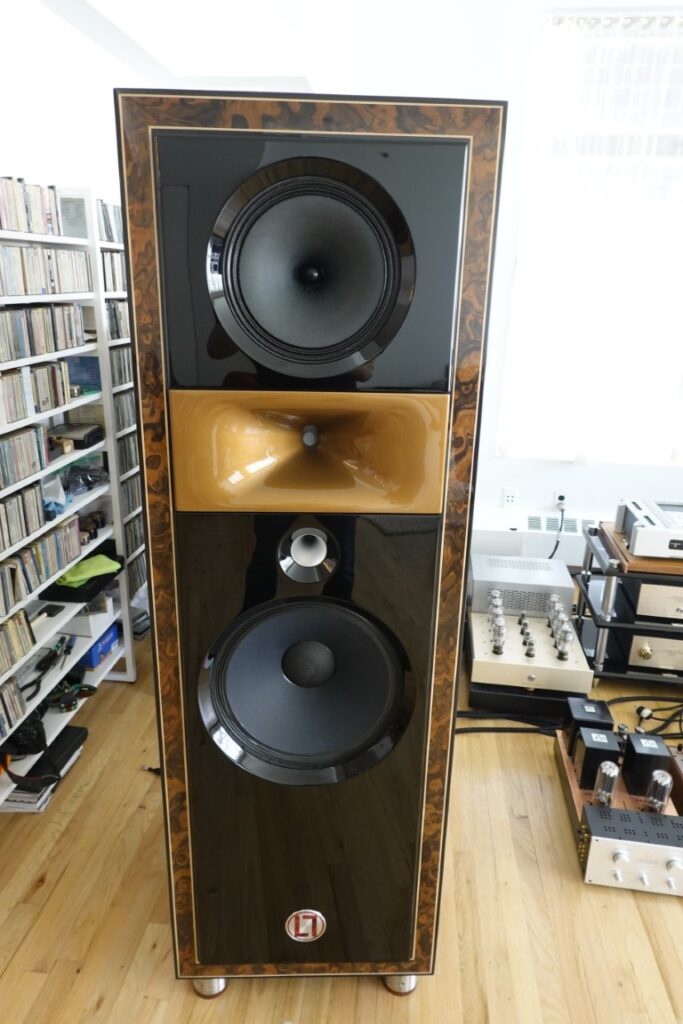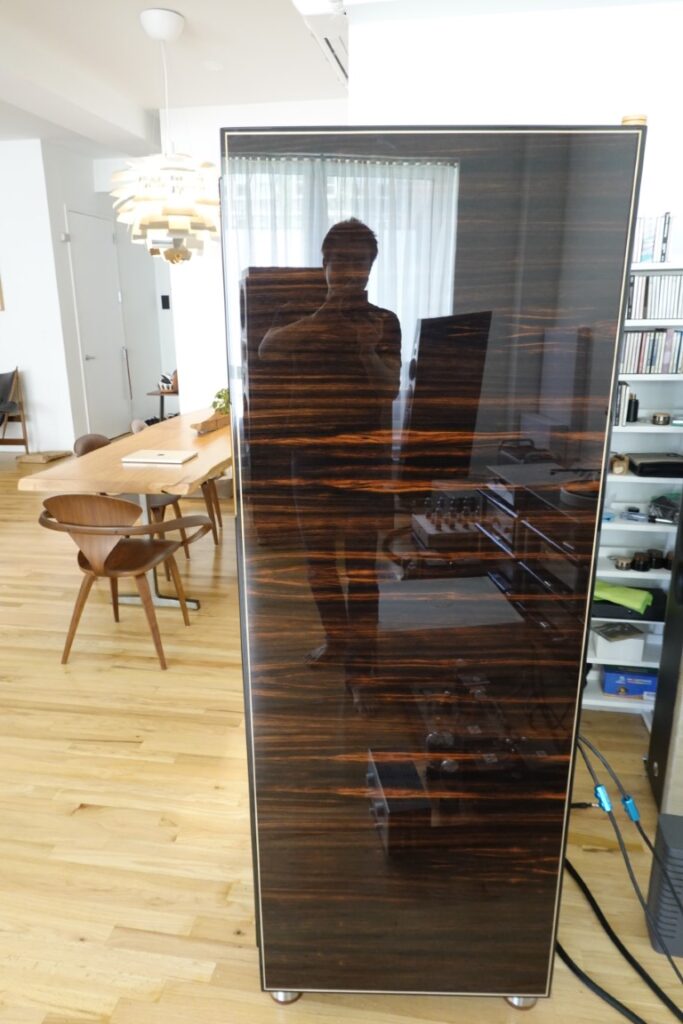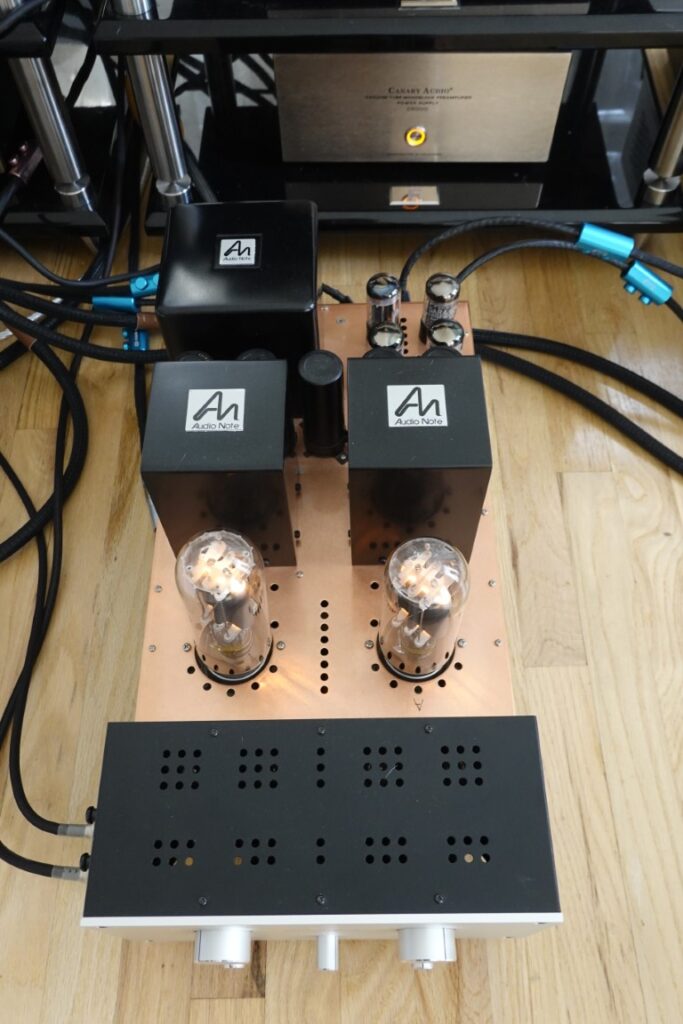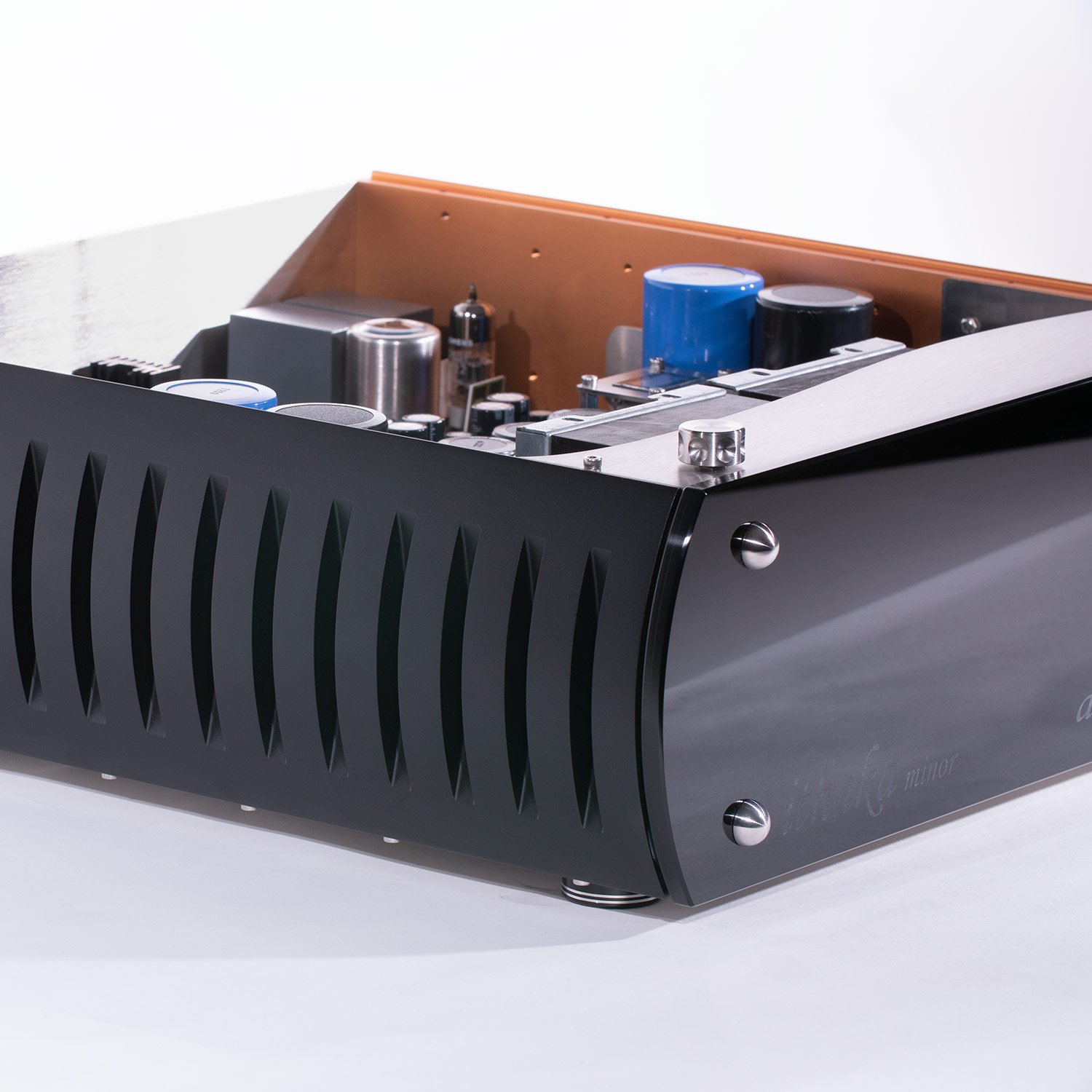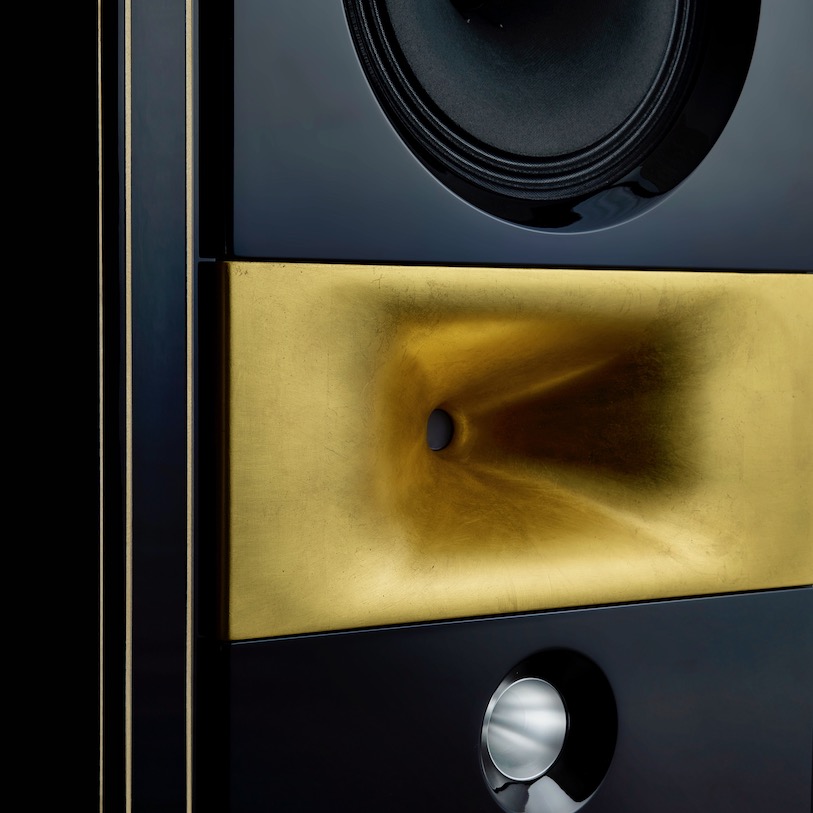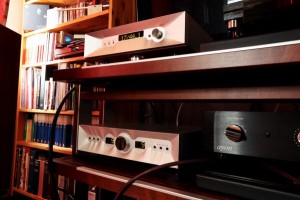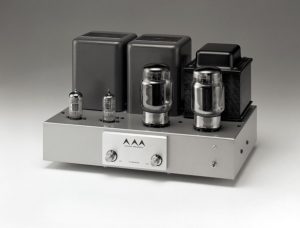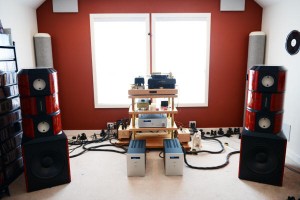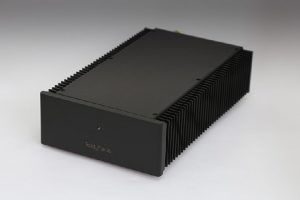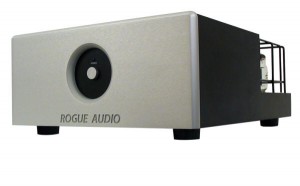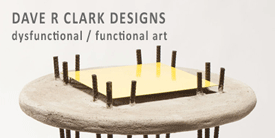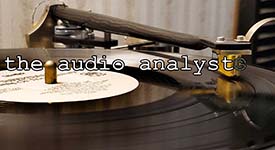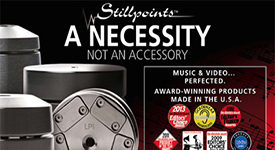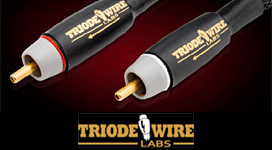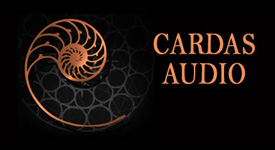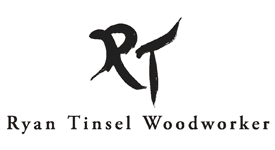The Karan Acoustics Master Collection POWERa Stereo amplifier is Milan Karan's new masterpiece stereo amplifier. The Master Collection is Karan's accumulation of over 30 years of audio engineering and design experience, replacing the entire previous product line. He began designing his Master Collection 10 years ago. Karan's goal was to make the best sounding amplifier without any compromises. He wanted to create an amplifier to sound as near as possible to live music and deliver instantaneous effortless power to drive any loudspeakers with transparency and great ease.
Karan Acoustics was founded by Milan Karan in 1986. Karan initially made his living designing and servicing high-tech medical equipment. But his love of music led him to design and build audio equipment on the side. He particularly loves live jazz and classical music; and he regularly attends concerts whenever he has the opportunity. The company is boutique size, a small group of dedicated people. The CNC millwork is done inhouse with their own CNC machine. Impressive! Karan Acoustics has been distributed in Europe and Asia for more than 25 years. (Wynn Wong of Wynn Audio is the North American distributor).
The POWERa Stereo is built exquisitely and is massive. Everything inside has been not just improved but redesigned from the ground up. It's a dual mono and a true differential (balanced) circuit topology design that literally is two amplifiers in a single chassis (it requires two 15A power cords). It is "cost-no-object" using the very highest quality passive (Vishay resistors and Audyn capacitors) and active components (Sanken bi-polar output devices). It uses the best PCB conducting and isolation material and the thickness of the copper on the PCB is much higher than usual. It weighs an astounding 231 lbs; the weight comes from a high-quality aluminum chassis and huge custom-made toroidal transformers. To achieve a natural, precise, and dynamic sound, the heatsinks are designed to eliminate acoustical and vibrational feedback to its components. The POWERa Stereo utilizes two enormous 2100 VA low noise toroidal transformers and a 210,000 uF bank of custom made capacitors. It's a powerhouse. It produces an impressive 650W into 8 Ohms, 1100W into 4 Ohms, and 2000W into 2 Ohms, 20Hz-20kHz. It's hard to imagine needing even more power; but if you need such things, the POWERs Mono delivers an even more remarkable 2100W into 8 Ohms. After extensive evaluations, the CMS (Critical Mass Systems) CSA2 isolation/support feet were chosen. All components are internally wired with Cardas Audio pure copper wires, and WBT Nextgen RCA inputs and speaker binding posts are used.
The POWERa Stereo doesn't run hot to touch and won't heat up a room in summertime. It operates in a clever sliding Class-A bias circuit, so it works unlike other active bias designs. In Karan designed electronic circuit monitors, the incoming signal introduces a small amount of bias on the output stage when the circuit is in standby. When a musical signal is detected, the circuit measures the amplitude of the signal and opens the output stage (increasing bias) and current rails on the output transistors instantaneously. This way the output transistors always keep the right amount of current and temperature to maintain the same quality performance with minimum heat and energy loss. Traditional Class-A amplifiers run hot which runs a constant high bias.
The POWERa Stereo's main chassis is designed as a single piece unibody made from a solid CNC-machined high-quality aircraft aluminum to help to reduce mechanically induced jitter. It's quieter, more dynamic and open sounding without compression on the signal as compared to other materials and to minimize resonances further and as I have noted, the CMS (Critical Mass System) CSA2 isolation support feet were chosen. The chassis acts as a heatsink for the output devices. Its front panel consists of a black glass panel in the center and the Karan logo and name illuminate in red when the amp is on. The silver aluminum top continues the front geometric layout and a large logo is engraved in the center. To the left and to the right of the logo, cooling is elegantly completed with an array of small holes. Round back, there are two AC "power on" switches on the lower back of the POWERa Stereo and line conditioner power switch in the middle of the IECs. There is one balanced (XLR) input and one single-ended (RCA) input with two pairs of WBT speaker binding posts.
The POWERa Stereo has unique features such as a proprietorially designed built- in Line conditioner. You can turn it on by switching on a toggle switch located on the bottom center of the rear panel, directly below the speaker cable outputs and the single-ended and balanced inputs. Power conditioning is on when switched in the "0" position and disengaged in the "1" position. Actually, it's the opposite of turning the amp on and off. You can even switch on and off while the amplifier is switched on and playing music. Karan wanted to have its own design and solution to treat unwanted DC artifacts from the main supply. He thought of everything! However, built-in line conditioner in my system I wasn't able to discern the difference with my Torus isolation transformer in the system. Unfortunately, I wasn't able to take the Torus out of my system to evaluate the built-in line conditioner. My setup didn't have enough wall outlets to bypass the Torus. With a different setup than my system I would think the built-in line conditioner would enhance the sound.
The POWERa Stereo was delivered by DHL in a huge heavy wooden crate. It was job for two people and it required extra hands. Fortunately, my neighbor was around to help me uncrate this monster of an amplifier. Wow! This amplifier is seriously heavy. I used a Karan KAS-450 amplifier as my reference for nearly a decade. The KAS-450 is a big heavy amplifier but compared to the POWERa Stereo, it is a light weight. After I got situated in my listening room, I sat down and admired its elegant look and finish.
For this review I used a Canary Audio C5000 preamplifier and the Vimberg Tonda D and the Lorenzo Audio Labs LM1 loudspeakers. I used the Vimberg Tonda D primarily, and as a source, the Taiko Audio Extreme handled the streaming. Fortunately, I was told by Wynn the amplifier was burned in prior to shipping for review. Just to be sure I let the system play for a few days before doing any serious listening.
Listening to the Vimberg Tonda D driven by the POWERa Stereo provided great synergy. However, after a few notes, it was obvious that the POWERa Stereo was also providing something very special. The music appeared to emerge from a blacker and more velvety background. It was startling, considering its massive size and power, that rendered the music superb details and subtle nuance with a sense of palpability and realism. Transparency and resolution were superb as well. It's been a long time since I last listened to the KAS-450 but, if my memory serves me, the POWERa Stereo is an evolution in design that shines in every area deemed important. The POWERa Stereo drove the speakers effortlessly with power, transparency, detail, solidity, and weight with musicality. It was compelling and emotionally involving. The POWERa Stereo is simply music to my ears.
The POWERa Stereo's magic persisted throughout its range from top to bottom and from the softest pp to the thunderous fff. Playing large-scale orchestral music it didn't disappoint, even on the most demanding loudest crescendos. When the music demands drive, the POWER Stereo simply says "yes." It has the sheer physicality and muscular delivery of a twelve-cylinder engine.
The POWERa Stereo played great with all kinds of music and took the Tonda D to a great new height. Listening to symphonies and concertos was exceptionally rewarding. The POWERa Stereo rendered large-scale symphonic works with seemingly limitless dynamic contrast along with a powerful and full bodied low-end. The POWERa Stereo's effect on spatial performances was outstanding. I put on one of my favorites, Elgar Cello Concerto, Op. 85 performed by the master Jacqueline du Pre, and the maestro Sir John Barbirolli, conducting the London Symphony Orchestra. It was moving and very emotional. The POWERa Stereo produced an enormous size and scale on a soundstage that was phenomenally wide, deep, holographic, and beautifully layered with a wonderful sense of bloom and space between instrumental images. Jacqueline du Pre took center stage; her cello resonated emotionally drawing me into a musical bliss. It fleshed out the subtle details of pitch variations, and bowing textures were exquisitely moving, making it sound very close to a live performance. The power and drive of the POWERa Stereo was undeniable. This is an amplifier with endless scale and dynamics. It rendered large-scale symphonic works with seemingly limitless dynamic contrast and a powerful and a full bodied low-end. It drove the Tondo D with power and authority without losing any of the integrity of the music. It was able to scale the dramatics of the full orchestra crescendos with great ease. The orchestral crescendos are also reproduced with great control and authority. I noticed this on Dvorak's Symphony N0.9 in E Minor, Op.95 (London CS 6217) with maestro Fritz Reiner conducting the Chicago Symphony. Listening to orchestral concerts crescendos not only got louder, they got bigger and filled my listening space completely. From pianissimo to fortissimo, the system handled it all with remarkable realism.
Listening to Rossini's Sonata a Quattro N0.1 in G major Andante (HMC/Qobuz) performed by Ensemble Explorations and Roel Dieltiens conducting was outstanding. The POWERa Stereo excelled in chamber music, not just in symphonic music. It reproduced small ensembles very naturally and delicately with an organic sound. Each instrument displayed a rich and full harmonic structure with palpable strings that were delightful. The notes flowed brilliantly, and the complex mix of tonal nuance proved very engaging. The POWERa Stereo's ability to retrieve and resolve instruments is top-notch, revealing layers of the small detail and nuance without sounding bright, etched, or hyper-detailed. Remarkably, listening to this beautiful Sonata Quattro, I was reminded that Rossini was only twelve years of age when he composed his Sonata a Quattro in 1804.
Listening to vocals was equally impressive. One weekend I was listening to Melody Gardot's outstanding recording of "Love Me Like a River Does" from her Worrisome Heart (Decca (UMO) Qobuz). I was startled, by the immediacy and presence of images, then by the resolution and complexity of her voice. Both the Vimberg Tonda D and the Lawrence Audio Labs LM1 sounded fabulous; they sang like a canary; her voice had utmost transparency and resolution with freedom from grain. Music flowed with detailed information without being analytical. Often, solid-state's superb transparency can be accompanied by an analytical sonic aftertaste but not here.
The Karan Acoustics POWERa Stereo amplifier is an astounding achievement. It sets the benchmark even higher for solid-state amplifiers. It has it all; power and grace. Where it is expensive. If you're in the market for a top tier reference amplifier (at any price), do yourself a favor and go listen to the POWERa Stereo. Highly recommended!
(With a heavy heart I must say my friend Milan Karan passed away last April).
POWERa Stereo amplifier
Retail: $53,000
US and Canada Distributor
Wynn Audio
212.826.1111
Karan Acoustics

